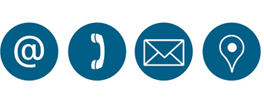Installing an Automated External Defibrillator (AED) cabinet in hotels provides numerous benefits, enhancing safety for both guests and staff. Here are some key advantages:
1. Life-Saving Potential
AEDs can significantly increase survival rates for cardiac arrest victims. Quick access to an AED can be the difference between life and death.
2. Immediate Response Capability
Having an AED on-site allows for a rapid response in emergencies, crucial in cardiac incidents where every second counts.
3. Increased Guest and Staff Safety
The presence of an AED demonstrates a commitment to health and safety, reassuring guests and staff that their well-being is a priority.
4. Compliance with Regulations
Many regions and organizations require AEDs in public spaces, including hotels. Installing an AED cabinet can help ensure compliance with these regulations.
5. Staff Training Opportunities
Providing AEDs encourages training programs for staff in CPR and AED use, enhancing overall emergency preparedness.
6. Enhanced Reputation
Hotels that prioritize safety and emergency preparedness can improve their reputation, attracting more guests who value health and safety.
7. Cost-Effectiveness
While there is an upfront cost, the potential savings in healthcare costs and liability claims can outweigh the investment if a life is saved.
8. Community Support
Having an AED can also benefit the local community, as it can be used by first responders or bystanders in emergencies outside the hotel.
9. Emergency Protocol Development
Installing an AED promotes the development of comprehensive emergency response plans, which can enhance overall safety culture within the hotel.
10. Peace of Mind
Knowing that an AED is readily available can provide peace of mind to guests and staff, contributing to a more relaxed environment.
Implementation Tips:
Strategic Placement: Position the AED cabinet in a highly visible and accessible location.
Clear Signage: Use clear signs to indicate the location of the AED and provide instructions on how to use it.
Regular Maintenance: Schedule regular checks to ensure the AED is functional and that supplies are up-to-date.
By investing in an AED cabinet, hotels can enhance safety measures and be better prepared for cardiac emergencies, ultimately fostering a safer environment for everyone. If you need further details or guidance on specific models, just let me know!
1. AED Device
The main defibrillator unit, which is designed to analyze heart rhythms and deliver an electric shock if necessary.
2. Adult and Pediatric Pads
Electrodes that attach to the patient’s chest. Many AEDs come with both adult and pediatric pads, or pads that can be used for both.
3. User Instructions
Clear, step-by-step instructions for operating the AED, often available in multiple languages. Some cabinets also include visual guides.
4. CPR Mask
A barrier device to provide rescue breaths safely during CPR.
5. Gloves
Disposable latex or nitrile gloves to protect the responder during a medical emergency.
6. Scissors
For cutting clothing to access the chest if necessary.
7. Alcohol Wipes
For cleaning the area where the pads will be placed, ensuring good adhesion.
8. Emergency Contact Information
Instructions on who to contact for emergency services and internal emergency protocols.
9. Signage
Clear signs indicating the location of the cabinet and instructions for use, often featuring bright colors for visibility.
10. Battery and Maintenance Log
Some cabinets include a log to track the maintenance and checks of the AED, including battery replacement and pad expiration dates.
Considerations for Installation:
Accessibility: Ensure the cabinet is easily accessible to both staff and guests.
Visibility: Use bright colors and clear signage to mark the location of the AED cabinet.
Regular Checks: Implement a routine for checking the contents of the cabinet to ensure everything is stocked and functional
Installing an AED (Automated External Defibrillator) in a small business can significantly enhance workplace safety. Here are some key considerations and benefits for small businesses:
Benefits of Having an AED
Life-Saving Potential: AEDs can dramatically increase survival rates for cardiac arrest victims. Quick access is crucial for effective intervention.
Employee Safety: Providing an AED demonstrates a commitment to employee health and safety, fostering a supportive work environment.
Guest and Customer Care: If your business serves the public, having an AED can enhance customer safety and confidence.
Regulatory Compliance: Depending on your location, there may be legal requirements for AEDs in certain types of businesses, particularly those with larger foot traffic.
Emergency Preparedness: An AED is a key component of a comprehensive emergency response plan, ensuring you’re ready for medical emergencies.
Training Opportunities: Installing an AED encourages staff training in CPR and AED use, promoting a culture of safety.
Improved Reputation: Businesses that prioritize safety can enhance their reputation, attracting more customers and employees who value a safe environment.
Key Considerations for Implementation
Choosing the Right AED:
Look for user-friendly models that provide clear audio and visual instructions.
Consider features like adult and pediatric pads, long battery life, and durability.
Location:
Place the AED in a visible and accessible location, ideally near high-traffic areas or where large gatherings occur.
Training:
Provide training for employees on how to use the AED and perform CPR. Consider regular refresher courses.
Maintenance:
Implement a routine for checking the AED to ensure it’s operational, including battery checks and pad expiration dates.
Emergency Protocols:
Develop clear emergency response protocols and ensure all staff are familiar with them, including how to call emergency services.
Signage:
Use clear signage to indicate the location of the AED and provide simple usage instructions.
Budgeting:
Factor in the cost of the AED, ongoing maintenance, and training when budgeting for the installation.
Additional Tips
Engage with Local EMS: Inform your local emergency medical services about your AED installation so they can assist in training and know its location.
Encourage a Safety Culture: Promote awareness about the importance of having an AED and emergency response readiness among employees.
By installing an AED, small businesses can enhance their safety measures, potentially saving lives in critical situations. If you need further assistance or specific product recommendations, feel free to ask!






